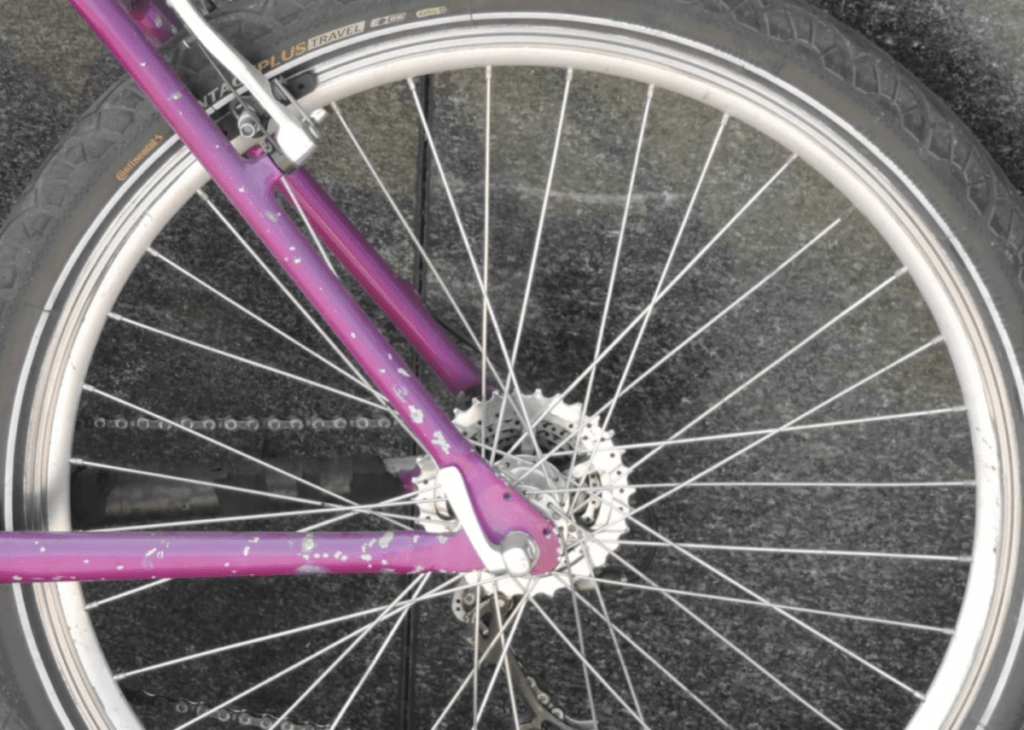While you possibly already know what some of the differences are between carbon fiber mountain bike wheels and their aluminum mountain bike wheel counterpart, there are a number of details about these that possibly make them even more different than you realized.
Which kind of wheel rim is right for you will ultimately be your decision based on how you ride and your own personal riding style preferences. Carbon wheels are lighter, aluminum wheels are more sturdy and can handle inclement weather more effectively. Your riding style and the terrain you traverse will be the biggest factor in choosing your wheel style.
Either way, bike wheels have come a long way throughout history since the first bike wheels where made out of wood to look a lot like wagon wheels.
However, learning more about each one, what makes them unique, and what their advantages and disadvantages are can be a huge help in making your decision between the two options. So let us take a more detailed look at each of them so that we can better compare them.
Carbon Fiber Mountain Bike Wheels
As its name implies, carbon fiber mountain bike wheel rims are made up of what are known as carbon fibers. These fibers are then woven together much in the same way that fiberglass is, along with plenty of a specific kind of glue that allows it to be molded and which keeps it in its proper shape after it hardens.
This glue and the weave of the carbon wheel allow it to have some flexibility and this aids the tires and the suspensions in absorbing the impact as your bike rolls over small or large obstacles and as you land at the end of a jump. Any amount of help in the area of shock absorption on a mountain bike will always help your tires to stay more on the ground and less in the air.
When your tires get to have better contact with the ground the traction that you bike gets is improved, giving you better control over your mountain bike in the rough patches where you are more likely to need it the most at. When you are going uphill, the less weight that you have to carry with you, the faster you will be able to go.
This is at least partially due to the fact that any weight will be fighting against you and wanting to roll back down the hill, not go up it. Therefore the less both you and your mountain bike weigh, the less weight you will have pulling you back.
A lighter wheel rim also results in a lighter wheel, which in turn results in a mountain bike that is overall lighter in weight. Since there are two wheels, this means that the amount of weight that you can save is doubled if you can replace both of the wheels on your mountain bike with carbon fiber wheel rims.
However, this will also mean that the price will be doubled in order to replace both of the wheel rims on your mountain bike. Carbon fiber can be pretty expensive, making even buying one wheel rim well over the budget limit of most bikers as often as not. It is this price tag that prevents more mountain bikers from making the switch, though many who do not own carbon rims do have this feature on their wish list of things they would like to have for their mountain bike.
The other main reason why more bikers do not have carbon wheels on their mountain bikes is due to the fact that it is somewhat less sturdy and more prone to getting dings and nicks in it from flying rocks and anything else that might hit it. Too heavy of an impact on these wheels is also much more likely to result in the “taco” effect which is where the wheel bends at any given point to look like a taco.
Finally, one optional reason why more people go with carbon is that they look great! This is in part due to their design, but the larger part of it is due to the fact that you can get them in almost any color. This feature makes it super easy to personalize the look of your bike, whether it is by making it your favorite color or simply by making the look of your bike match your personality more.
When choosing carbon wheels out, you should always look at the grade of the weave before you buy them. Low grade wheels will not be able to stand up to nearly as much hard usage as a good carbon weave that is of a high grade. Wheels that have a good grade will most of the time cost a bit more, but these will be much safer to ride on too.
Aluminum Mountain Bike Wheels
Aluminum is a great option for mountain bike wheels, even if it isn’t as light in weight as carbon rims are. Its best feature is how durable it is and the fact that it can last a long time. This means that you will often have to replace a carbon wheel long before you would have to replace an aluminum one if both wear put under the same wear and tear.
Since aluminum wheel rims are cheaper than carbon to begin with, having to replace them less often only adds to this effect. On the downside, however, is the fact that aluminum does not come in the color options that carbon has, which makes it harder to personalize your bike. What few wheel options do have coloring rarely keep it long since it tends to scratch off with wear, but the silver color of the aluminum itself can give your bike a classy look.

Aluminum wheels tend to be much stiffer than carbon ones are. This means that you are going to feel more of the vibrations from the terrain you are riding over, though carbon wheels are getting better at this lately. However, this is not always a bad thing, since feeling the trail can help you learn to pick a better line which will in turn help to make you a better overall mountain biker – even if it is not quite as comfortable.
Aluminum can also be a great asset to have if you plan on doing any amount of biking in the rain or over really wet trails. The reason why it is better here is because of the fact that aluminum is much easier to handle when it comes to braking in wet conditions. Often with carbon you will have to do what is sometimes referred to as “pre-braking” in order to get the layer of water off of the wheels so that you can actually brake effectively.
If you are riding in the rain or on a path that has a lot of twists and turns, you are not always going to be able to see very far ahead on the trail at all. Therefore, for this reason alone being able to quickly come to a complete stop may just mean the difference between a near crash and an actual crash on the trail.
The other environment setting in which aluminum is better is in the heat, since it can handle any temperature that you throw its way. However, carbon does not have this benefit. If carbon becomes too hot, it will lose some of its integrity. Part of this may affect its braking ability, but if it gets bad enough it can potentially cause the frame to bend when it hits bumps in the trail.
While it would have to get really hot in order for that to happen, if you are going to be in a hot area and be doing a lot of braking on a long downhill section – which will always make the rim of your tires much hotter due to the friction – then it would be better to be safer and to go with aluminum wheel rims.
Conclusion
Whichever route you choose to take when it comes to your wheel rims is up to you. Each option has its own advantages and disadvantages as you have no doubt seen. Your pick should be based on your own unique style as a mountain biker and what suits you best.

